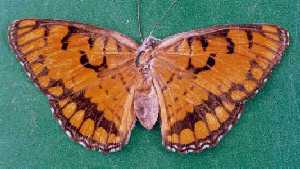
Home | Biodata | Biography | Photo Gallery | Publications | Tributes
Nature Study

 |
Home | Biodata | Biography | Photo Gallery | Publications | Tributes Nature Study |
 |
There was an interesting report by Mrs.Ganguli in the Newsletter ( October 1963) about Bulbuls in Delhi feeding their young ones with certain common butterflies, with wings and all. There have been reports of butterflies being eaten by birds such as bee-eaters and drongos ( Wynter--Blyth, BUTTERFLIES OF THE INDIAN REGION: 52). The fact that the bulbuls were feeding their young ones with the common species like the Plain Tiger or the Danaid Eggfly shows that it is not an accident. It is very likely that butterflies form a regular part of the diet of the young ones, if not the adult birds. Mrs. Ganguli's report is also interesting from the fact that the Plain Tiger is commonly believed to be a species 'distasteful' to its predators and the Danaid Eggfly is said to get protection from the predators because of its striking resemblance to the former species. If the bulbul had taken the Plain Tiger then the bulbul did not mind the taste or on the other hand, if it had been the Danaid Eggfly that was caught, the bulbul had recognized the Eggfly in spite of the mimicry!
Several species of birds have been observed to eat butterflies in migration (C.B.Williams, INSECT MIGRATION:177-178) and we know that the availability of food, plays an important factor in the migration of birds. Very little is known about the migration of insects in India and the study of migration of marked butterflies may prove to be a useful venture, which amateur naturalists can easily undertake.
The author has recently started marking butterflies with paper labels. Each label has a registration number and the legend ' Inform Christian College, Madras--45 ' and a record is kept with the date of marking and the name of the species for each marked individual with its registration number. We adopt the method (Williams, INSECT MIGRATION:201) of folding the paper and sticking the label soaked in 'quickfix'. The adhesive soaks through the wing when some pressure is applied and the label is waterproof. The author has chosen two main species, namely the Blue Tiger (Danais limniace) and the Common Indian Crow (Euploea core) which are known to be migratory (R.Reuben, J.Bombay Natural History Soc., 58:815).These butterflies are tough and easy to catch as they congregate on the Crotalaria plants and settle down on flowers.
In other parts of the world marked butterflies have been recovered even at a distance of
850 miles from the place of marking and most butterflies have a life span of several months. Readers of the
Newsletter are asked to look for marked butterflies and to start projects of their own. The author shall be equally grateful for bird notes connected with butterflies.